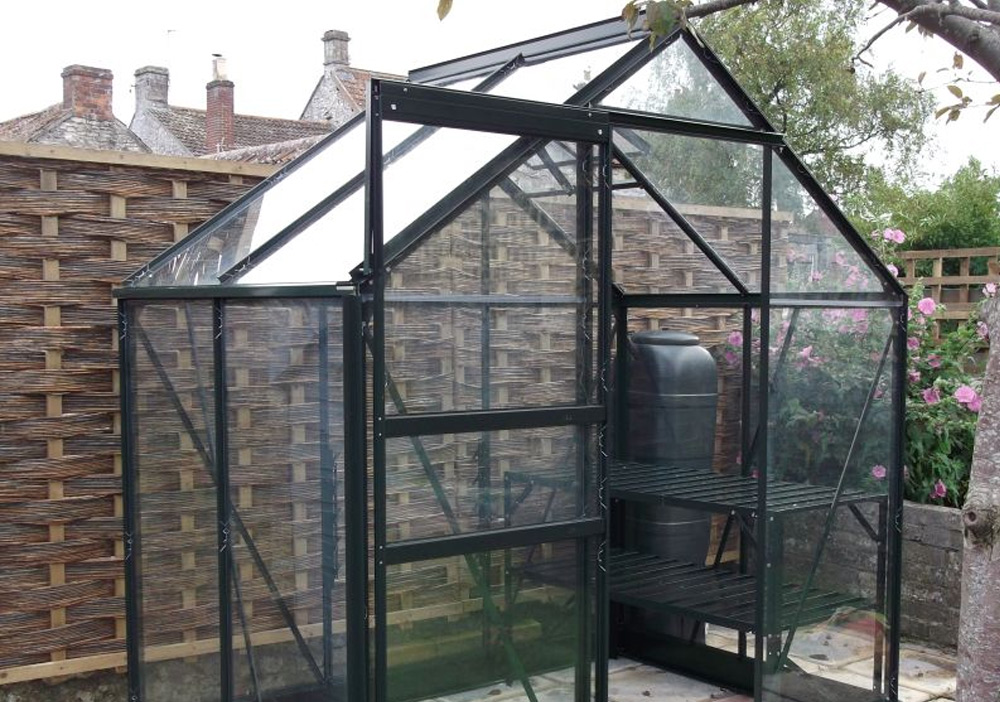How Greenhouses Work

A greenhouse uses glass or plastic sheeting to allow light rays from the sun to enter the structure where they are absorbed by the plants and converted to heat. When the plants release the heat energy, it is trapped by the glass and the greenhouse stays warm.
A greenhouse requires windows, vents or fans to prevent it from getting too hot.
There are greenhouses that have an additional heating system so the greenhouse stays warm even on cold and cloudy days.
Need a new greenhouse? Checkout our amazing range here.
How Does a Greenhouse Work?
The easiest way to describe what happens in a greenhouse is to think of light energy being converted to heat energy.
When items in the greenhouse absorb the sunlight, they convert it to heat energy, and release the heat into the greenhouse.
It will be important to note that different coloured objects will respond differently to the sunlight.
Items that are darker will absorb the light and become warmer. Lighter coloured items don’t absorb as much of the sun’s rays, and instead reflect the light.
There are a couple of reasons that heat doesn’t easily leave the greenhouse.
The first reason the heat from the sun does not leave the greenhouse is that after an object absorbs the light energy it will release the heat energy very gradually. If you think about any dark coloured object sitting in the sun, you will notice that it will heat up very quickly, but it will take a significant amount of time for it to cool down.
The second reason the heat does not leave is that heat energy does not pass through glass and plastic sheeting as well as light energy. What happens to the heat energy as the heated-up object cools down? The heat energy is released into the air. Warm air rises. When the warm air gets to the roof of the greenhouse it doesn’t have anywhere to go because heat energy does not pass through glass or plastic sheeting as well as light energy, so the warm air is effectively trapped in the greenhouse.
The Greenhouse Effect Explained
Similar to the glass in a greenhouse, the Earth is surrounded by a thick layer of atmosphere. This layer prevents the warm air from escaping causing Earth to be its own greenhouse, this is known as the Greenhouse Effect.
Controlling Temperatures
Depending on your climate and gardening needs you may need to add a heating system to your greenhouse. If it is extremely cold where you live, or a limited supply of sunshine your plants will not grow successfully without an additional source of heat.
Gardeners often deal with the opposite problem in the summer months, struggling to keep their greenhouses cool enough to avoid scorching their plants. One strategy is to paint the roof or your greenhouse white. Since white reflects light and prevents heat absorption this may help keep the damaging rays of the sun at bay. Others have used a white sheet or curtain over the greenhouse to help block the sunlight. In the summer, this is more cost effective and more easily removed in the winter.
Location Has a Huge Impact
Think carefully about where you put your greenhouse, as its location will greatly affect its ability to absorb heat. Where you put a greenhouse influences not only how much light it is able to absorb but also how much heat it can radiate. If possible, it is wisest to put your greenhouse to the south of another building.
For the maximum amount of sunlight place your greenhouse in a south facing direction. The second-best choice is to place your greenhouse facing southeast or even east.
If you live in an area that gets extremely hot, it would be ideal to place your greenhouse in the shade of trees. Deciduous trees are your best option as the leaves will help to protect your greenhouse plants in the spring and summer. When the trees lose their leaves in the fall your greenhouse will be able to get the sunlight it needs.
Freestanding greenhouses generally are not that well insulated and will very likely need an additional heat source if you live in a cold climate. Some greenhouses are attached to another building and because of that, they can get some heat from the shared wall. If the shared wall is exposed to sunlight, this strategy will be even more effective.
Ventilation
There are several types of ventilation systems that can keep a greenhouse from getting too hot and help to eliminate fungal infections in plants. It may be as simple as having a window that can be opened to allow some of the heat to escape. Another effective ventilation strategy is to use a fan or vents that can be opened or closed.
 Author:
Author: